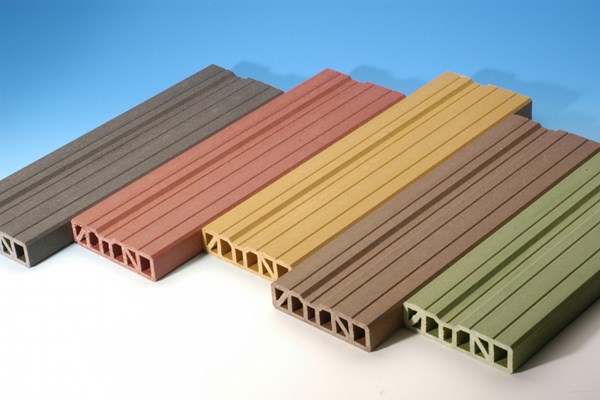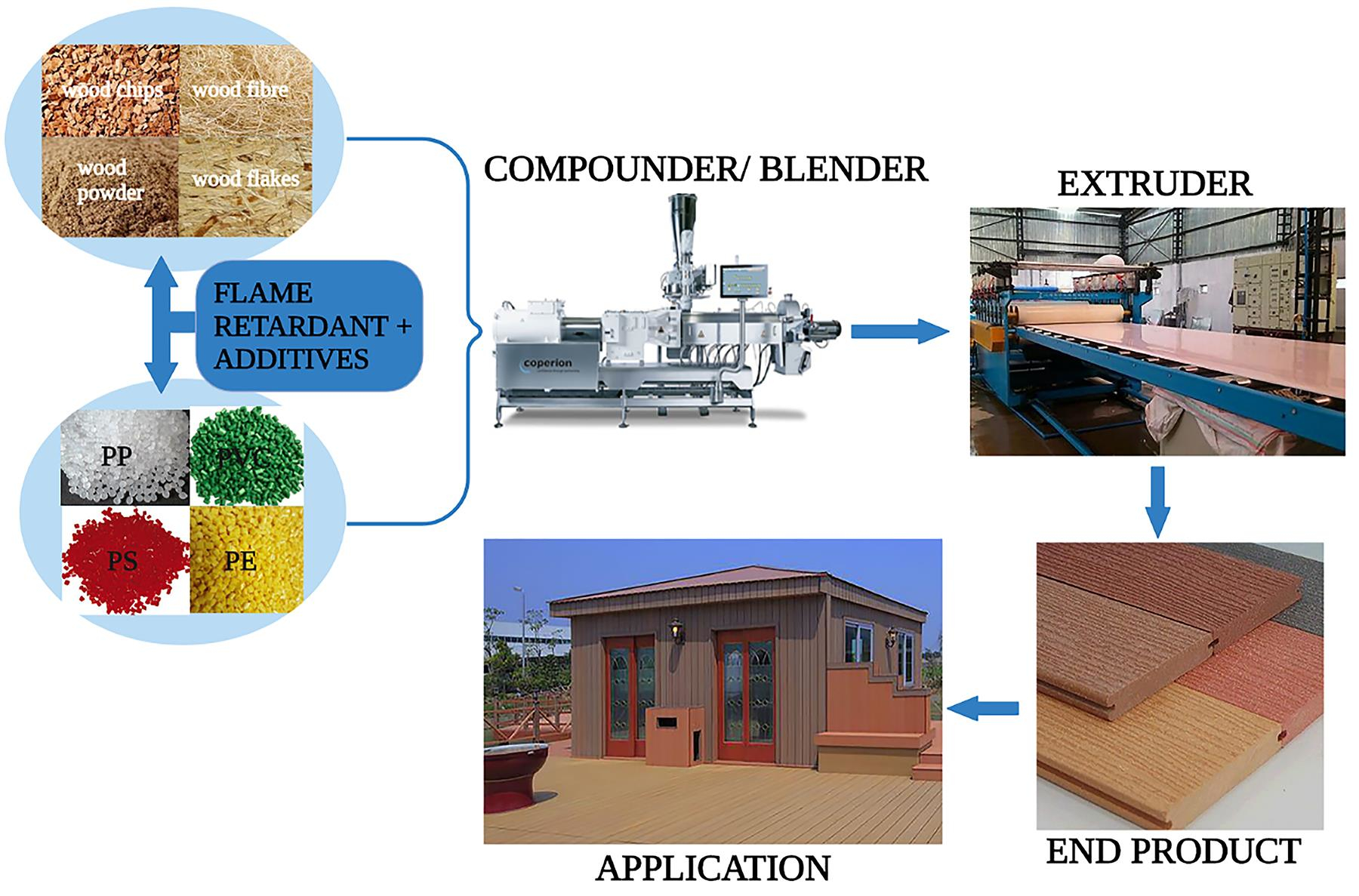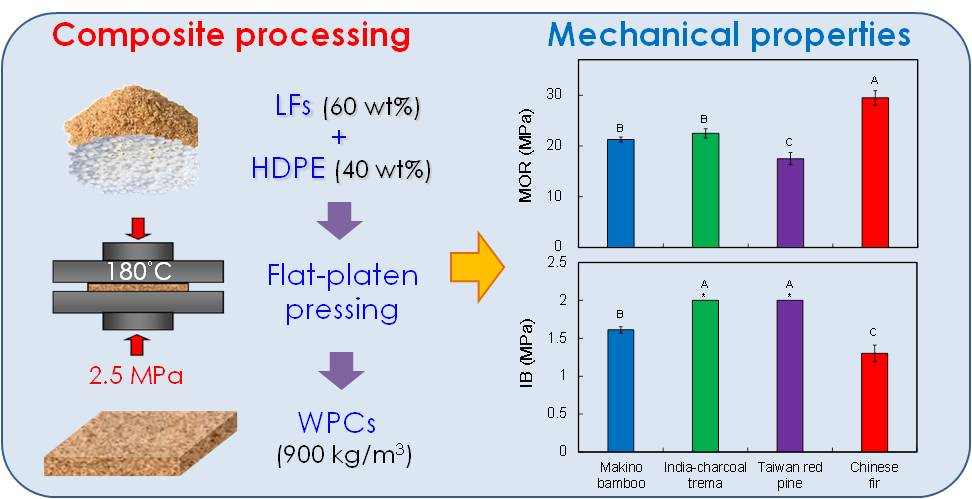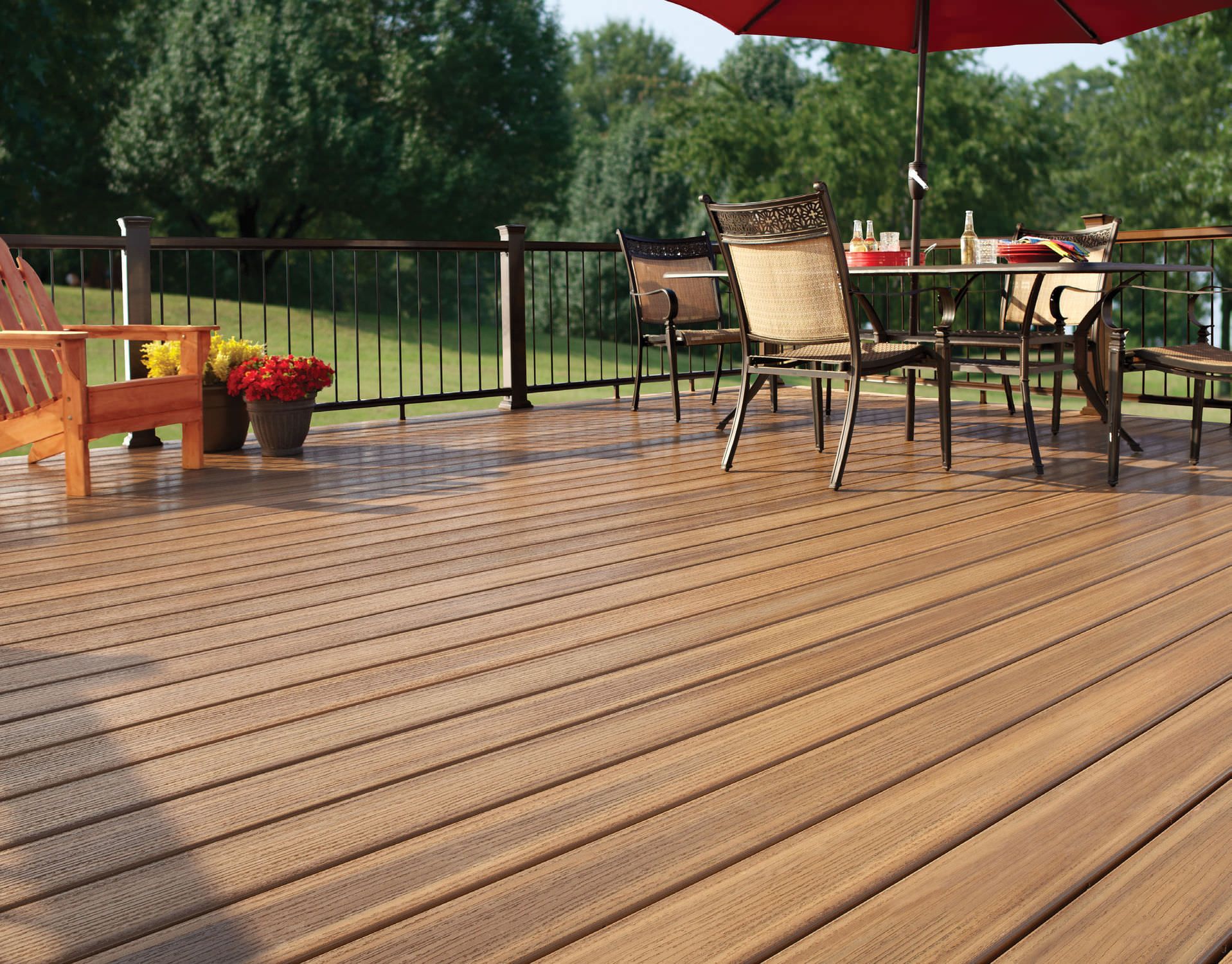Preparation of ternary plastic-wood composite materials
Friday, June 16, 2023Wood-plastic composite material is one of the important research and development directions in the field of wood science and technology today. It is a composite material processed by lignocellulose, thermoplastic resin and other additives. Wood-plastic composite materials have the characteristics of simple production process, low maintenance cost, long service life, etc., and have better performance than pure wood materials and plastic products, so they are widely used in building materials, furniture, logistics packaging and other industries.

A large number of hydroxyl, aliphatic and aromatic groups in lignin generate strong intramolecular interactions through hydrogen bonds, and its extensive cross-linking inevitably limits the application of lignin. Polymer blending is cost-effective and widely used to create new polymer materials with desirable properties. The strong interaction force between lignins can be reduced by blending or partial mixing, and because lignin has the characteristics of low cost and biodegradability, it can be fully utilized in the production of new polymer materials. However, lignin is immiscible with most polymers due to the low entropy of mixing. The polarity of non-polar polyolefins like polypropylene and polyethylene is very different from that of lignin, and this thermoplastic does not bond well to the lignin interface. Therefore, some chemical modifications or addition of compatibilizers are required to reduce their interfacial tension.

In the past ten years, the lignin/resin blend modification technology has made remarkable progress, especially the research results of several resins such as polyethylene (PE), polypropylene (PP), and polyvinyl chloride are more outstanding. Acrylonitrile-butadiene-styrene (ABS)/PVC-based composite material is a new type of composite material obtained by blending ABS resin and general-purpose plastic PVC. ABS/PVC combines the excellent properties of ABS and PVC, such as the excellent processability and heat resistance of ABS and the flame resistance and chemical resistance of PVC, and the price of PVC is lower than that of ABS. The addition of PVC can effectively reduce costs . At present, there are few studies on ABS/PVC composites. Therefore, it is necessary to develop an effective technical means so that lignin can be effectively applied to ABS/PVC composite materials and improve the performance of plastic-wood composite materials as a whole.

Applying lignin directly to plastic-wood composites will significantly reduce the toughness of the composites. In this study, nitrogen-grafted lignin was applied to PVC-wood composites. Although it was improved, its tensile strength and tensile fracture Elongation is still low. Considering that the ABS (copolymer of styrene and butadiene rubber modified acrylonitrile) polymer chain has an aromatic structure in the polystyrene segment and a strongly polar ‑CN group in the polyacrylonitrile segment, therefore ABS resin and lignin should have good interfacial compatibility. Therefore, ABS/PVC was selected as the base material in this study. Among them, ABS has good properties, such as excellent mechanical properties, chemical resistance, easy processability and recyclability, and it is widely used as an important engineering thermoplastic.
The purpose is to develop a modified lignin, so that the modified lignin and ABS/PVC can be prepared into a ternary composite wood-plastic composite material, so that its performance can be equivalent to that of ABS/PVC itself.

Material advantage:
1.The use of nitrogen-grafted lignin can effectively improve the mechanical properties of ABS/PVC composites, especially the bending properties are better than ABS/PVC itself.
2.The modified lignin can be effectively used in ABS/PVC plastic-wood composite materials, which can effectively improve the utilization rate of biomass, and the addition of lignin can reduce the cost.
3.Nitrogen-grafted lignin can effectively improve the anti-ultraviolet aging performance of ABS/PVC composites.